Art & Exhibitions
Tate Britain Recasts Sargent as a Fashion-Savvy Sensation
The English-American artist has sometimes been overlooked as a pandering society painter.

The English-American artist has sometimes been overlooked as a pandering society painter.

Richard Whiddington

Wander the painting galleries of a major museum on either side of the Atlantic and chances are you’ll encounter John Singer Sargent. The reasons are as much geographic as artistic. Born in Europe to American parents, Sargent flitted between London and Boston and by the final decade of the 19th century was the portraitist of choice for New England’s nouveau riche and Britain’s aristocracy.
On his death in 1925, his legacy seemed settled—Rodin, for one, had called him the era’s Van Dyck. But in time Sargent was labelled a pandering society painter, a traditionalist who devoted his talents to depicting the luxurious draperies of the elite.
Over the past decade, however, Sargent has received renewed attention. First came an exhibition at London’s National Portrait Gallery that suggested his paintings offered a prophetic glimpse at the modern world. Now a show fittingly co-organized by MFA Boston and the Tate Britain — organizations that supported Sargent during his lifetime— presents Sargent’s fastidiousness towards dress not as a shallow vanity, but as a powerful tool used to reveal the interiority of his subjects.
“Fashioned by Sargent”, whose three-month stint in Boston last year is followed in London from Feb 22 to July 7, marries 50-something Sargent paintings with period dresses and accessories, including exact items worn by sitters.
“By showing original garments alongside the paintings in which they are depicted, visitors have a unique opportunity to see exactly how Sargent translated clothing into paint,” Tate curator, James Finch said via email. ” His distinction as a portraitist derives from the special sensitivity he brought to the rendering of clothing and fabric.”
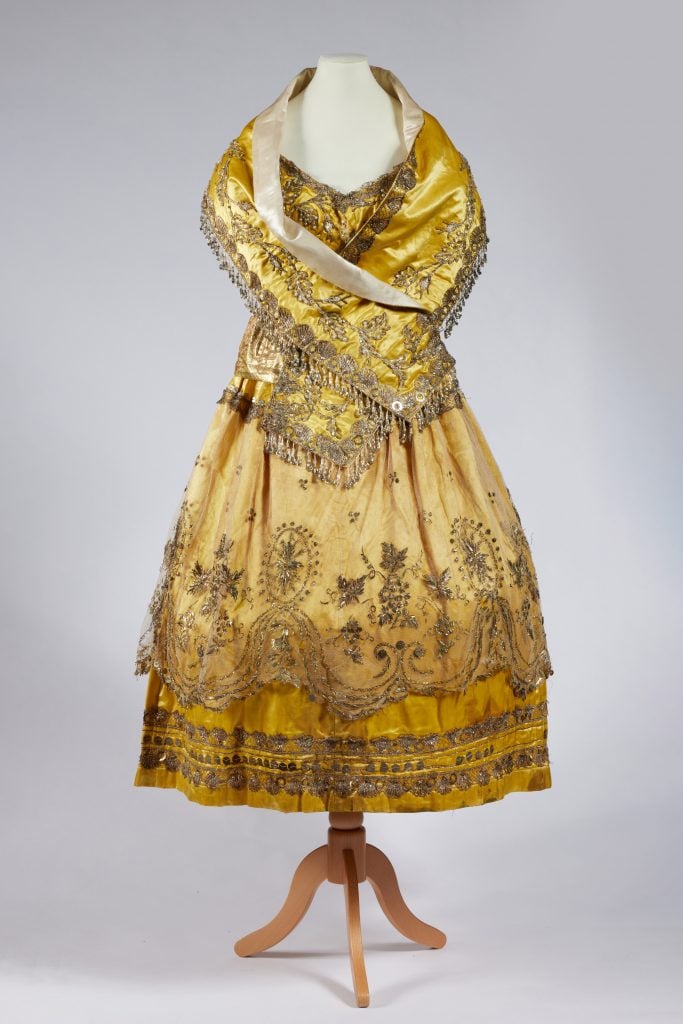
Costume worn by Carmen Dauset Moreno (c.1890). Photo: courtesy Houghton Hall.
And, yes, the garb is gorgeous. There’s the costume of Spanish dancer Carmen Dauset Moreno as shown in La Carmencita (1890). It’s a thing of sun-golden satin trimmed with waves and florets of silver that must have dazzled as it twirled. There’s the flowing sylvan “Beetle Wing Dress” worn by Ellen Terry in her 1888 Macbeth production, so-called because it’s affixed with beetle wing cases. On canvas, Terry has the look of an awed zombie, the crown held aloft, her auburn locks tumbling down her sleeves.
These works, along with Vernon Lee (1881), a dashed portrait of the expansive English writer, speak to Sargent’s place amid the frenetic cultural movements of the late 19th century—he also painted the likes of W.B. Yates, Robert Lewis Stevenson, and Edwin Booth. But most interesting are works in which Sargent uses fashion to express the difference and character of his sitters. There’s certainly something to the organizers’ comparison with a fashion shoot director. Here was a painter who would step away from the easel, cross the room to tweak and cajole garments precisely into place.
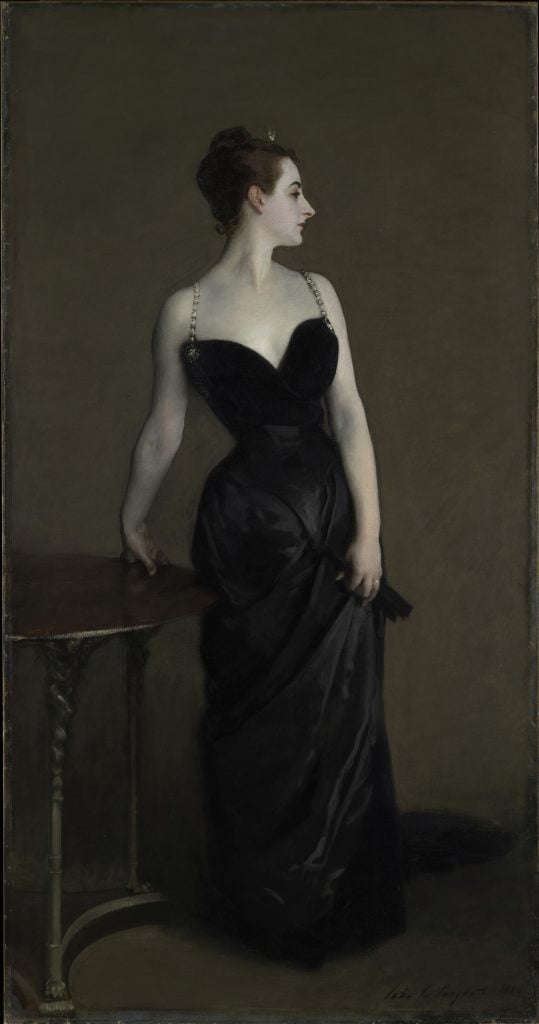
John Singer Sargent, Madame X (1883). Photo: courtesy The
Metropolitan Museum of Art.
Most notoriously, his submission to the Paris Salon of 1884, Madame X, depicted Mme Gautreau in a black satin evening dress with a jeweled strap loosed off the shoulder. It proved too salacious with Sargent correcting the strap a year later. In “Lady Sassoon” from 1907 he offers sharp intellect shrouded in refinement through flashes of pink that burst from the folds of a black taffeta opera cloak.
And how did the artist himself dress, you ask? With plain simplicity. “Sargent was not an extrovert, and preferred to dress in the dark suits of the bourgeois middle-class,” Finch said, noting that when the poet Wilfrid Scawen Blunt first met Sargent he called the painter a ‘superior mechanic’ on account of his suit and pot hat.
Other times, Sargent reconfigures dress entirely. In W. Graham Robertson (1894), in spite of the summer heat, he insisted that his sitter don a long woollen coat to complete the dandy look. In his wedding portrait for Ena Wertheimer he has her gleefully mocking societal conventions. She wears the garments of the male-only Order of the Garter and waves a broomstick as though a sword. It was broadly criticized when exhibited at the Royal Academy in 1905 as crass and deliberately provocative.
This reception is a reminder to consider art in the context of its time. Sargent regarded himself an outsider and enjoyed painting those he found kinship with. His tweaks and subtle subversions may seem tame by today’s standards, but as “Fashioned by Sargent” insists, we would do well to pay closer attention.
See more images:
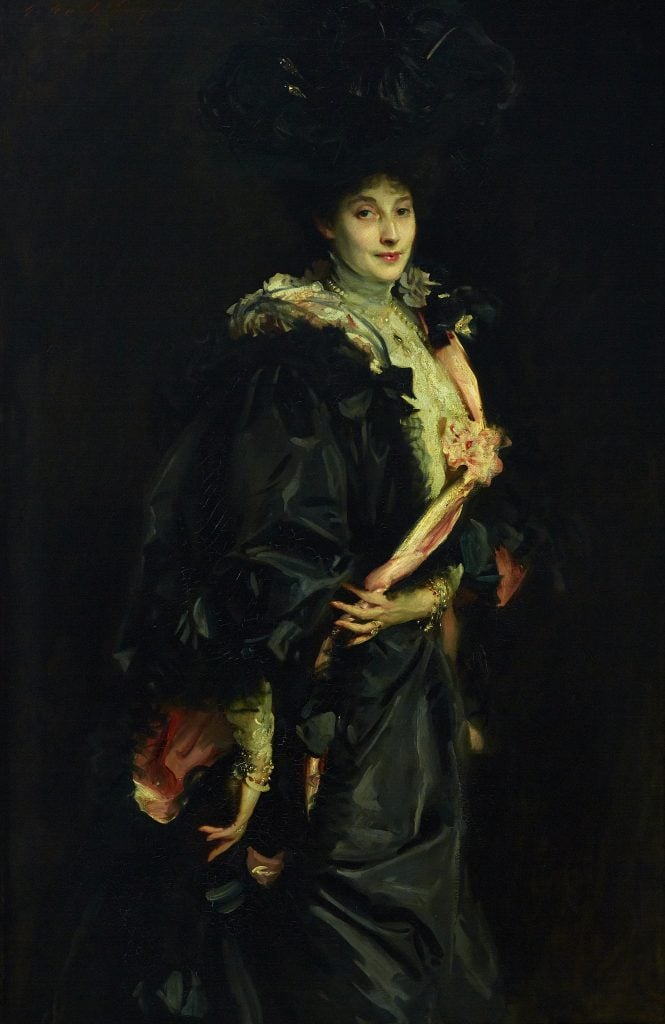
John Singer Sargent, Lady Sassoon (1907). Photo: courtesy Houghton Hall
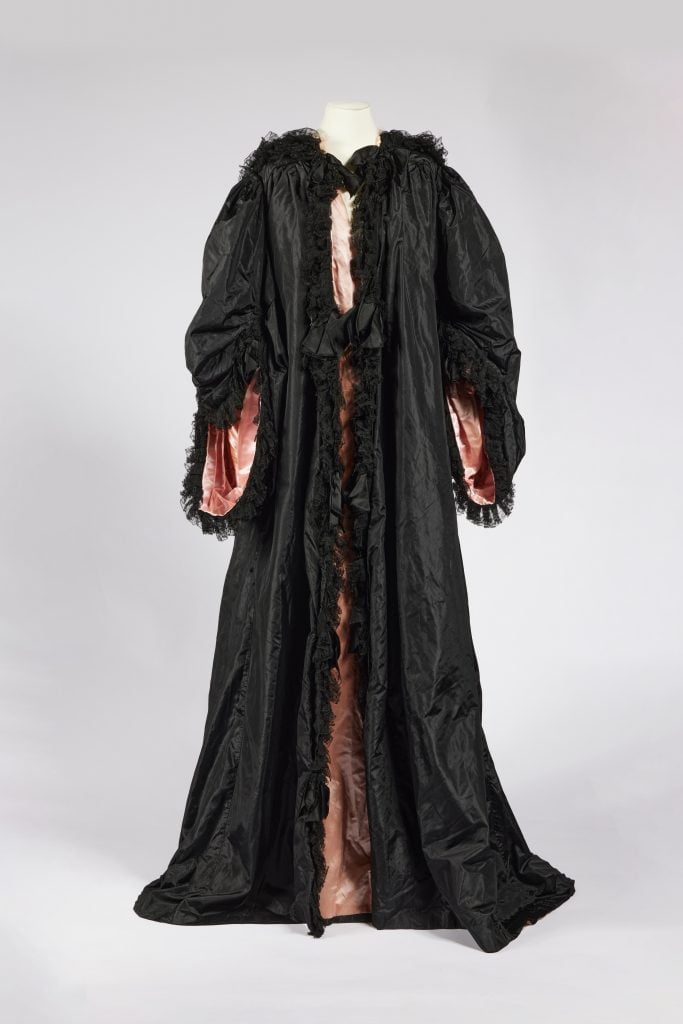
Opera cloak worn by Lady Sassoon, c.1895. Photo: courtesy Houghton Hall.
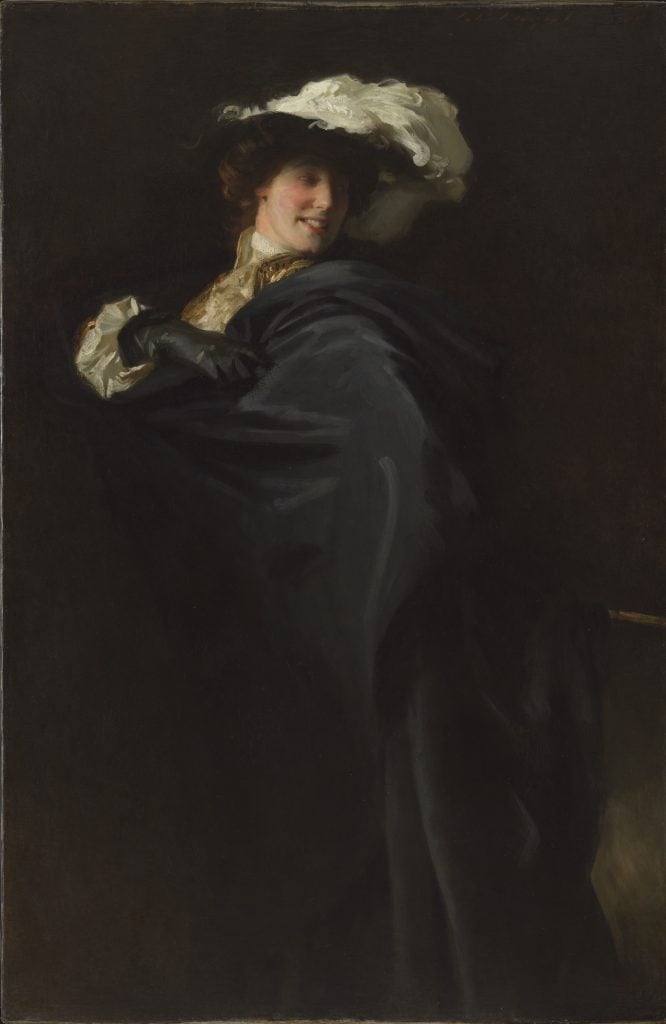
John Singer Sargent, Portrait of Ena Wertheimer: A Vele Gonfie (1904). Photo: Tate Britain.
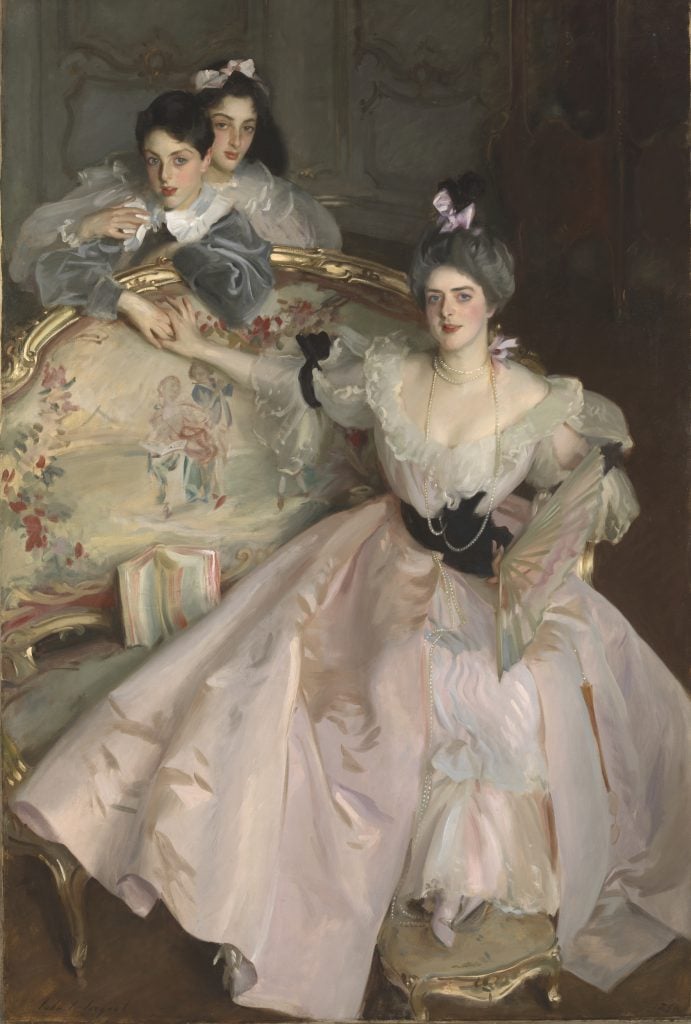
John Singer Sargent, Mrs Carl Meyer and her Children, (1896). Photo: courtesy Tate Britain.

John Singer Sargent, Dr Pozzi at Home (1881). Photo: courtesy The Armand Hammer Collection.